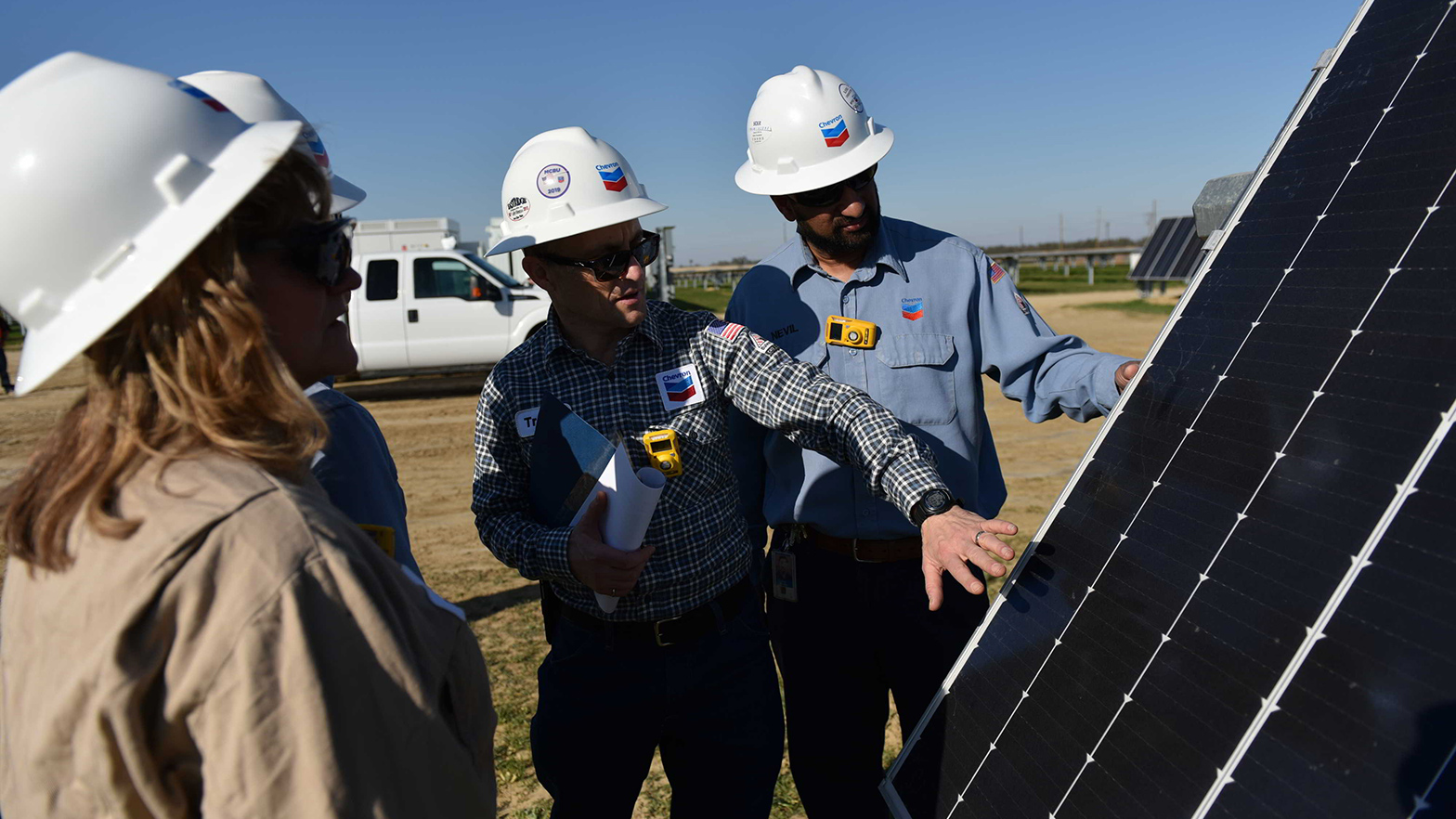emissions solutions
3 things to know about the future of hydrogen
1 min read | march 29, 2024
Austin Knight, Chevron’s vice president of hydrogen, speaking at CERAWeek 2024.
Momentum is building around hydrogen. Why? One reason is that it can help lower carbon emissions in hard-to-abate sectors like steel, cement and
Austin Knight, Chevron’s vice president of hydrogen, shared key insights at CERAWeek 2024 about how a focus on technology, partnership and policy will be required to make faster progress toward scaled solutions.
austin knight
vice president of hydrogen
advancing technology
Scaling these solutions will play an important role in meeting the world’s lower carbon goals. Power from sources like wind, solar and natural gas can be used to make hydrogen. Together, these technologies can deliver lower carbon energy to market.
Chevron’s investments in this area include:
- Hydrogen fueling stations that are being built across California.
- The 5-megawatt, solar-to-hydrogen project that is underway in California’s Central Valley.
- Lower carbon intensity fuel projects that are expanding across the Asia Pacific region.

The team at Chevron’s Lost Hills facility in California check on the solar panels that provide electricity to the oil field and soon, the hydrogen production plant.
partnerships that deliver
Hydrogen is one piece of a larger puzzle in helping solve the world’s energy challenges. No one country or company can meet growing energy demands alone.
Collaborations will be necessary to make production easier and less expensive. Chevron and its partners are laying a foundation for growth through projects like:
- The Advanced Clean Energy Storage Project in Delta, Utah, that will deliver affordable, reliable energy.
- A new hub which will fast-track hydrogen along the U.S. Gulf Coast.
policy matters
To reach global lower carbon goals, it will take flexible and supportive policy.
austin knight
vice president of hydrogen
topics covered
related content
-

 chevron CEO discusses the future of energy
chevron CEO discusses the future of energyemissions solutionsjanuary 20, 2025
-

 novel ideas, established companies key to advancing lower carbon tech
novel ideas, established companies key to advancing lower carbon techemissions solutionsjanuary 14, 2025
-

 chevron CEO talks growing production, efficient spending
chevron CEO talks growing production, efficient spendingemissions solutionsdecember 18, 2024
-

 1st US hydrogen-powered passenger ferry open for business
1st US hydrogen-powered passenger ferry open for businessalternative fuelsaugust 23, 2024
chevron email updates
Subscribe to our newsletter to receive news and updates.



